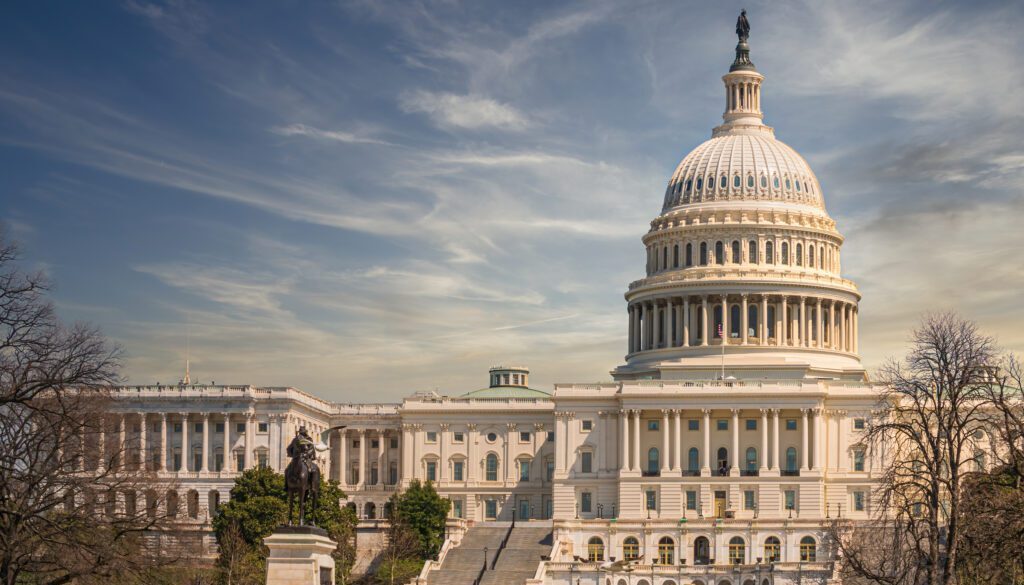Community Safety: Preparing for Increased Threats to State and Local Buildings
The number and severity of threats to public safety have increased significantly over the past few years. Specifically, law enforcement organizations have seen a rise in threats involving local government institutions, such as state capitol buildings and polling places.
These incidents not only make local residents feel unsafe, but they also threaten the safety of legislators and other local government officials, hampering their efforts to protect their communities. Increasing public safety involves recognizing these threats and developing strategies to protect the targets.
State and Local Government Buildings Face an Increase in Threats
State and local governments throughout the U.S. have faced an increasing number of threats in recent years.
One common type of attack involves “swatting,” in which the perpetrator makes a fraudulent call to emergency responders in an attempt to have armed law enforcement officers deployed to a specific address or location. Several politicians have been swatting targets in recent years.
Other instances involve threats of imminent violence; targets receive an email or phone call warning of a bomb or an active shooter event. For example, several state capitol buildings received bomb threats in early January of 2024. Capitol buildings in several states, including Connecticut, Hawaii, Maine and Mississippi, were locked down or evacuated.
Although the FBI determined that these threats were hoaxes, they nevertheless significantly impacted government operations and tied up local emergency resources, including first responders and law enforcement. Many of these buildings received additional bomb threats the very next day, again prompting evacuations and impacting community safety.
Threats of this type are expected to continue or even rise in number. According to the results of a 2022 Washington Post-ABC News poll, the majority of Americans (88 percent) are concerned about an increased risk of politically motivated violence.
Civilian residents aren’t the only ones with this concern. In 2023, the Department of Homeland Security released a statement warning of an increased potential for violence during the lead-up to the 2024 election cycle. The statement also indicates that attacks may be motivated by “legislative or judicial decisions pertaining to sociopolitical issues.”
Other violent incidents or threats involve the judicial branch of government. Early in 2024, a defendant attacked a judge in a Clark County, NV, courtroom. Other judicial officials have received threats following their rulings in highly polarizing cases.
Community Safety and Threats to Public Buildings
Even if many of these threats turn out to be hoaxes, they still have severe negative consequences. Local residents feel unsafe, government officials have their workday interrupted, and crucial law enforcement and emergency response resources are potentially drawn away from legitimate emergencies.
Threats to judicial buildings and officials also carry far-reaching consequences. In addition to the immediate impact on local safety, these kinds of threats may influence future court proceedings, as attorneys, judges and courthouse employees fear reprisal for doing their jobs.
Community safety plans must include strategies to keep government employees safe and public buildings and locations protected.
Critical Communications Tools Help Protect Soft Targets
What steps can local officials and law enforcement take to harden these soft targets? They must work together to develop emergency response plans for state capitol buildings, city halls, government facilities, polling places and other public locations.
Communication is an essential aspect of an effective emergency response plan. A critical communication and collaboration platform allows administrators and security personnel to immediately inform affected individuals of threats and/or violent incidents. First responders can provide instructions and real-time updates to keep people safe and informed.
Prevention is another essential component of community safety. While not all threats or attacks can be prevented, some of them can. Encouraging government employees and local residents to “see something, say something” can help law enforcement learn crucial information as quickly as possible.
A community safety app with anonymous tipping capabilities can facilitate this type of engagement and make it easier for employees and citizens to report potential threats without fear of reprisal. Local and state governments may also want to consider providing their employees with a panic button app, which allows any user to immediately report an emergency and initiate response procedures with a couple of taps on their smartphone.
Learn How Rave Mobile Safety Helps Protect Communities
Rave Mobile Safety, a Motorola Solutions company, is committed to partnering with local and state governments to help them protect their employees and communities. We offer a range of critical communications products, from multichannel emergency alert systems to cutting-edge collaboration tools.
Our solutions can help city, state and local officials prepare for and respond to all types of threats, both legitimate and fraudulent, as quickly and effectively as possible. To learn more about protecting government buildings and other soft targets in your local area, request a demo or contact the Rave Mobile Safety team.




